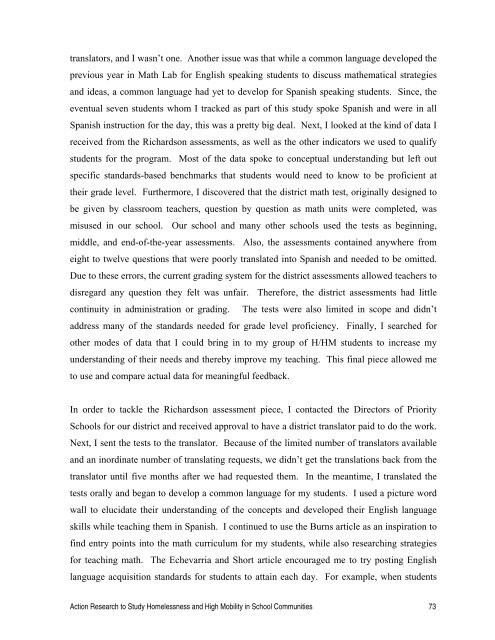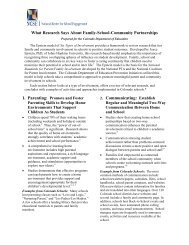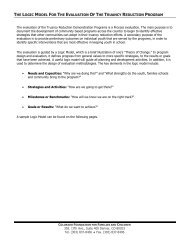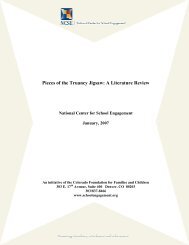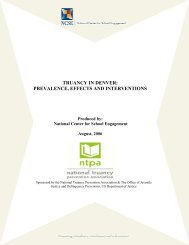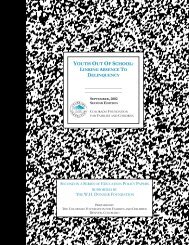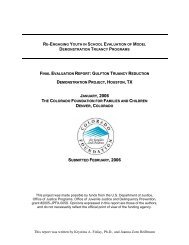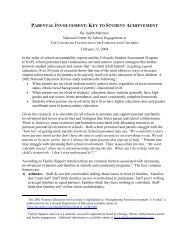Section 1: Academic Achievement - National Center for School ...
Section 1: Academic Achievement - National Center for School ...
Section 1: Academic Achievement - National Center for School ...
You also want an ePaper? Increase the reach of your titles
YUMPU automatically turns print PDFs into web optimized ePapers that Google loves.
translators, and I wasn’t one. Another issue was that while a common language developed the<br />
previous year in Math Lab <strong>for</strong> English speaking students to discuss mathematical strategies<br />
and ideas, a common language had yet to develop <strong>for</strong> Spanish speaking students. Since, the<br />
eventual seven students whom I tracked as part of this study spoke Spanish and were in all<br />
Spanish instruction <strong>for</strong> the day, this was a pretty big deal. Next, I looked at the kind of data I<br />
received from the Richardson assessments, as well as the other indicators we used to qualify<br />
students <strong>for</strong> the program. Most of the data spoke to conceptual understanding but left out<br />
specific standards-based benchmarks that students would need to know to be proficient at<br />
their grade level. Furthermore, I discovered that the district math test, originally designed to<br />
be given by classroom teachers, question by question as math units were completed, was<br />
misused in our school. Our school and many other schools used the tests as beginning,<br />
middle, and end-of-the-year assessments. Also, the assessments contained anywhere from<br />
eight to twelve questions that were poorly translated into Spanish and needed to be omitted.<br />
Due to these errors, the current grading system <strong>for</strong> the district assessments allowed teachers to<br />
disregard any question they felt was unfair. There<strong>for</strong>e, the district assessments had little<br />
continuity in administration or grading. The tests were also limited in scope and didn’t<br />
address many of the standards needed <strong>for</strong> grade level proficiency. Finally, I searched <strong>for</strong><br />
other modes of data that I could bring in to my group of H/HM students to increase my<br />
understanding of their needs and thereby improve my teaching. This final piece allowed me<br />
to use and compare actual data <strong>for</strong> meaningful feedback.<br />
In order to tackle the Richardson assessment piece, I contacted the Directors of Priority<br />
<strong>School</strong>s <strong>for</strong> our district and received approval to have a district translator paid to do the work.<br />
Next, I sent the tests to the translator. Because of the limited number of translators available<br />
and an inordinate number of translating requests, we didn’t get the translations back from the<br />
translator until five months after we had requested them. In the meantime, I translated the<br />
tests orally and began to develop a common language <strong>for</strong> my students. I used a picture word<br />
wall to elucidate their understanding of the concepts and developed their English language<br />
skills while teaching them in Spanish. I continued to use the Burns article as an inspiration to<br />
find entry points into the math curriculum <strong>for</strong> my students, while also researching strategies<br />
<strong>for</strong> teaching math. The Echevarria and Short article encouraged me to try posting English<br />
language acquisition standards <strong>for</strong> students to attain each day. For example, when students<br />
Action Research to Study Homelessness and High Mobility in <strong>School</strong> Communities 73


